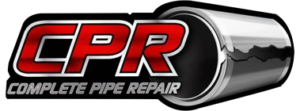Under‑Sink Leak? How to Diagnose and When to Call a Pro in Dayton
An under‑sink leak can start as a tiny drip but quickly escalate into water damage, mold growth, and costly repairs. In Dayton homes, leaks under kitchen or bathroom sinks often go unnoticed until damage is visible. This guide walks you through simple DIY inspections to pinpoint the problem and outlines when to call professionals for thorough pipe leak repair.
1. Common Causes of Under‑Sink Leaks
- Loose or Worn Connections: Compression fittings and slip nuts can loosen over time.
- Corroded P‑Traps: Metal traps may rust through, especially in older homes.
- Cracked Supply Lines: Flexible hoses can develop pinhole leaks after years of flexing.
- High Water Pressure: Excessive pressure stresses joints and fittings.
2. DIY Diagnosis Steps
- Visual Inspection: Clear out the cabinet, place a dry paper towel under the fittings, run water, and watch for damp spots.
- Tighten Connections: Use a gentle wrench to snug compression nuts and coupling connections.
- Test the P‑Trap: Loosen the slip nuts and remove the trap; inspect for corrosion or debris buildup.
- Check Supply Hoses: Look for bulges, cracks, or moisture on braided or rubber lines.
3. When to Call a Professional
- Persistent Drips: If leaks continue after tightening, you may have a hidden crack or corrosion issue.
- Mold or Mildew: Signs of mold under cabinets indicate long‑term moisture that needs thorough remediation.
- Low Water Pressure: Could signal a deeper blockage—consider scheduling a video pipe inspection to locate hidden damage.
- Multiple Leak Points: A single cause can mask secondary issues in adjacent fittings or lines.
4. Professional Repair Methods
- Trap Replacement: Swapping out a corroded P‑trap restores a reliable seal.
- Re‑sealing Joints: High‑grade plumber’s tape or sealants ensure watertight connections.
- Supply Line Swap: Upgrading to stainless‑steel braided hoses prevents future failures.
- Pipe Section Repair: For leaks in inaccessible lines, CPR can excavate a short section or employ trenchless lining techniques—learn more in our guide on trenchless vs. traditional sewer repair.
5. Preventive Maintenance Tips
- Annual Checks: Inspect under‑sink areas every spring for early signs of wear.
- Pressure Regulation: Install a pressure‑reducing valve if home water pressure exceeds 60 psi.
- Avoid Harsh Chemicals: Use enzyme-based treatments instead to erode fittings. Chemical drain cleaners can erode fittings.
- Stay Watchful: Place a moisture‑alert mat (available online) under sinks for immediate leak detection.
Still seeing drips under your sink? Don’t wait for damage to spread: Trust CPR’s skilled technicians and proven process for expert under‑sink pipe leak repair in Dayton. Visit our video pipe inspections page or call us to schedule an assessment today.
